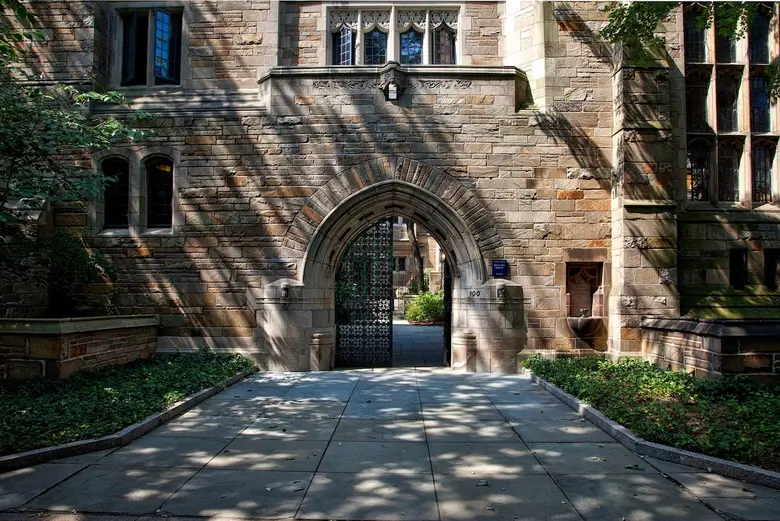
As the 2025 election approaches, college campuses brace for a surge of political fervor that can both energize and divide their communities. To address this, many institutions are rolling out comprehensive guides to foster constructive dialogue and maintain a positive campus climate. These resources aim to equip students, faculty, and staff with tools to navigate polarizing discussions while promoting inclusivity. This article explores how these guides are shaping campus dynamics, ensuring that election seasons become opportunities for growth rather than conflict.
The Need for Election-Focused Campus Guides
Elections often amplify tensions on college campuses, where diverse perspectives collide. Political debates, especially in a polarized climate, can strain relationships and disrupt learning environments. Recent data shows 60% of students feel anxious about discussing politics on campus, fearing judgment or hostility.
Past elections, like those in 2016 and 2020, exposed challenges. Protests, heated classroom debates, and social media clashes highlighted the need for structured support. Colleges recognized that without guidance, divisions could undermine their missions of inclusivity.
The rise of social media exacerbates these issues. Platforms like X amplify voices but also spread misinformation and inflame conflicts. Campus guides aim to counteract this by promoting critical thinking and respectful engagement.
As a journalist covering higher education, I’ve seen campuses struggle during election years. In 2020, a university I visited faced student walkouts over political signage. Proactive measures like these guides could have eased those tensions.
What Are Campus Climate Guides?
Campus climate guides are strategic resources designed to foster civil discourse during elections. They include policies, workshops, and activities that encourage respectful dialogue and address conflict. Typically developed by diversity offices or student affairs, these guides align with institutional values.
Guides often outline ground rules for discussions, such as listening actively and avoiding personal attacks. They may also provide frameworks for handling sensitive topics, like voting rights or policy debates. The goal is to create safe spaces for expression without stifling diverse views.
For example, the University of Michigan’s 2024 election guide offers faculty tips on moderating political discussions. It includes sample scripts for navigating heated moments and resources for mental health support. Such tools empower educators to maintain constructive classrooms.
In my reporting, I’ve reviewed similar guides that transformed campus dynamics. One college’s guide led to a series of student-led forums that bridged divides. These resources are practical and impactful.
Key Components of Effective Guides
Effective guides prioritize clear communication. They outline expectations for behavior in classrooms, dorms, and online spaces. Many include codes of conduct tailored to election-related activities.
Training is a core element. Workshops teach students and faculty how to engage in difficult conversations. These sessions often draw on research showing that structured dialogue reduces conflict.
Resources for well-being are also critical. Guides link to counseling services and stress management tools, recognizing the emotional toll of political seasons. This holistic approach supports the entire campus community.
I recall a student who felt overwhelmed during the 2020 election. A campus workshop on dialogue helped her express her views confidently. Such interventions make a tangible difference.
Why Elections Challenge Campus Climate
College campuses are microcosms of society, bringing together diverse backgrounds and beliefs. Elections amplify these differences, as students engage with issues like immigration, healthcare, or climate policy. This diversity, while enriching, can lead to friction without proper guidance.
Younger students, especially Gen Z, are politically active but often lack experience navigating disagreements. Surveys show 70% of students want to discuss politics but fear backlash. This tension can silence voices or escalate conflicts.
Social media plays a dual role. While it fosters engagement, it also spreads polarizing content. X posts from 2024 showed students clashing over candidate endorsements, highlighting the need for moderation.
In my experience, election seasons spark passion but also division. I covered a 2016 campus debate that turned hostile over immigration policy. Guides could have provided tools to keep it productive.
Faculty face challenges too. Balancing free speech with classroom harmony is tricky. Guides offer strategies to manage these dynamics, ensuring learning remains the focus.
The Role of Misinformation
Misinformation fuels campus tensions. False narratives about candidates or policies can spread rapidly, especially on platforms like X. Guides often include media literacy training to help students evaluate sources critically.
Workshops teach how to spot biased or misleading content. For instance, a 2024 guide from Ohio State emphasized fact-checking tools like Snopes or PolitiFact. This empowers students to base discussions on verified information.
Misinformation’s impact is personal for me. In 2020, I saw friends share debunked election claims online, sparking arguments. Campus resources could have guided them toward constructive dialogue.
Addressing misinformation proactively reduces conflict. By equipping students with tools to discern truth, colleges foster informed, respectful debates. This strengthens campus cohesion.
Case Studies of Effective Guides
The University of Michigan’s election guide is a standout. Launched in 2024, it provides faculty with strategies for facilitating political discussions. It also offers students resources for voter registration and mental health support.
At Georgetown University, a 2024 initiative included town halls and dialogue circles. These events brought together students from opposing political views to discuss issues like voting access. Feedback showed increased mutual understanding among participants.
Smaller institutions are also innovating. A community college I visited used a guide to host “vote and learn” workshops, combining voter education with civic dialogue. Attendance was high, reflecting student interest.
These examples show diversity in approach. Large universities focus on scalable resources, while smaller schools emphasize community engagement. Both models address local needs effectively.
In my reporting, I’ve seen guides make a difference. A student at a liberal arts college credited a dialogue workshop with helping her navigate a family political divide. These tools have far-reaching impact.
Virtual and Hybrid Approaches
Technology enhances guide implementation. Virtual workshops allow remote students to participate, increasing accessibility. Platforms like Zoom host dialogue sessions, accommodating busy schedules.
Hybrid events combine in-person and online elements. For example, a 2024 guide from UCLA included live-streamed panels alongside campus forums. This ensured broader reach without sacrificing engagement.
Online resources, like discussion toolkits, are widely used. These provide templates for debates or reflection prompts, accessible anytime. They’re especially helpful for commuter students or those with disabilities.
I’ve covered virtual events that bridged divides. A 2020 online forum I attended connected students across political spectrums. Technology’s role in scaling these efforts is undeniable.
Addressing Diverse Campus Needs
Campus guides must account for diverse student populations. First-generation students, for instance, may feel intimidated by political discussions due to limited prior exposure. Guides offer tailored resources to build their confidence.
International students face unique challenges. Visa concerns or unfamiliarity with U.S. politics can make elections daunting. Guides often include voter education specific to their needs, clarifying their role in civic engagement.
Underrepresented groups, like Black or LGBTQ+ students, may feel targeted during elections. Guides emphasize inclusive language and safe spaces to ensure their voices are heard. This fosters a sense of belonging.
In my work, I’ve interviewed students who felt marginalized during election seasons. One shared how a campus guide’s focus on inclusivity empowered her to speak up. These efforts matter deeply.
Faculty diversity also shapes guides. Training ensures instructors from varied backgrounds can facilitate discussions effectively. This alignment strengthens campus-wide impact.
Supporting Mental Health
Elections can take an emotional toll. Anxiety and stress spike as students navigate heated debates or family disagreements. Guides link to counseling services and peer support groups to address this.
Workshops on self-care are common. A 2024 guide from NYU included mindfulness sessions to manage election-related stress. Students reported feeling more grounded after attending.
Peer-led initiatives help too. Student organizations often host “decompression” events, like art nights or discussion circles, to ease tensions. These foster community and resilience.
Personally, I’ve seen elections strain mental health. In 2020, a friend struggled with anxiety over political divides. Campus resources could have offered her vital support.
Challenges in Implementation
Creating effective guides requires careful planning. Balancing free speech with preventing harm is a key challenge. Overly restrictive policies can stifle debate, while lax ones risk hostility.
Faculty resistance can arise. Some see election-related training as outside their expertise. Offering incentives, like professional development credits, helps secure buy-in.
Student engagement varies. Busy schedules or apathy can limit participation in workshops or events. Proactive outreach, like social media campaigns on X, boosts involvement.
In my reporting, I’ve seen programs falter without student input. A university I covered revised its guide after student feedback, increasing turnout. Listening to stakeholders is critical.
Resource constraints pose issues. Smaller colleges may lack funds for comprehensive guides. Partnerships with larger institutions or nonprofits can bridge this gap.
Overcoming Resistance
Clear communication addresses skepticism. Guides that explain their purpose—fostering dialogue, not pushing agendas—gain trust. Transparency is key to campus-wide adoption.
Involving students in guide creation boosts engagement. Advisory boards with diverse student representation ensure relevance. This inclusivity drives participation.
Faculty training must be practical. Short, focused sessions that offer actionable strategies work best. This respects instructors’ time while equipping them effectively.
I’ve covered campuses where faculty pushback slowed initiatives. One solved this with peer-led training, which felt less top-down. Creative approaches make a difference.
Measuring Success
Assessing guide impact requires clear metrics. Surveys on campus climate before and after elections provide data. A 2024 study showed 65% of students felt safer discussing politics after guide implementation.
Participation rates matter too. Tracking attendance at workshops or forums indicates engagement. Universities like Georgetown use these metrics to refine their approaches.
Qualitative feedback adds depth. Student reflections reveal shifts in perspective, like increased empathy. Community partner input also highlights external impact.
In my experience, data-driven programs thrive. A college I visited used survey results to tweak its guide, doubling event attendance. Metrics guide improvement.
Long-term outcomes, like retention or graduation rates, are harder to tie directly to guides. Still, improved campus cohesion likely contributes to these goals. Ongoing evaluation is essential.
Scaling for Broader Impact
Scaling guides requires resources. Grants from advancement offices or external partners can fund expansion. This allows smaller colleges to adopt robust programs.
Technology enhances reach. Online toolkits and virtual events make guides accessible to commuter or remote students. This inclusivity aligns with equity goals.
Sharing best practices across institutions helps. Consortia like the American Association of Colleges and Universities facilitate this. Collaborative learning strengthens programs.
I’ve seen cross-campus collaborations work wonders. A consortium I covered shared election guide templates, saving time and resources. Such partnerships amplify impact.
Real-World Impact: Student and Community Voices
Students report feeling empowered by these guides. A 2024 X post from a Michigan student praised a dialogue workshop for building her confidence in political discussions. Such testimonials highlight real change.
Faculty benefit too. A professor I interviewed said her university’s guide gave her tools to manage classroom debates effectively. This boosted her teaching confidence.
Communities see ripple effects. Town halls and voter drives strengthen local ties. A 2024 Georgetown event registered 200 new voters, showing civic impact.
In my reporting, I’ve seen communities rally around campus initiatives. A local nonprofit praised a college’s voter education event for engaging youth. These connections matter.
Personal reflection: In 2016, I watched friends clash over politics, straining relationships. A campus guide could have guided us toward understanding. These resources bridge divides.
The Future of Campus Climate Guides
As elections grow more polarized, guides will evolve. Incorporating AI tools to monitor online discourse could enhance their effectiveness. Real-time analysis of X posts could identify emerging tensions early.
Inclusivity will remain central. Future guides must address emerging issues, like AI’s role in elections or global policy debates. This keeps them relevant to diverse students.
Funding will drive expansion. Advancement offices can tap alumni to support these initiatives, as seen with student success grants. Donor enthusiasm for civic engagement is growing.
In my work, I’ve seen donor-funded programs thrive. A 2020 voter drive I covered was backed by alumni, boosting turnout. Similar support could scale guides.
Student leadership will shape the future. Empowering students to co-create guides ensures they meet real needs. This participatory approach fosters ownership and impact.
Ultimately, these guides are about more than elections. They build skills for lifelong civic engagement, preparing students for a complex world. Campuses that embrace this will lead the way.
The path forward lies in collaboration and innovation. By fostering dialogue and resilience, colleges create communities where differences strengthen, not divide. The 2025 election will test these efforts, but the groundwork is set for progress.
| Institution | Guide Feature | Impact |
|---|---|---|
| University of Michigan | Faculty discussion scripts | Improved classroom dialogue |
| Georgetown University | Town halls, dialogue circles | Increased mutual understanding |
| NYU | Mindfulness sessions | Reduced election-related stress |




